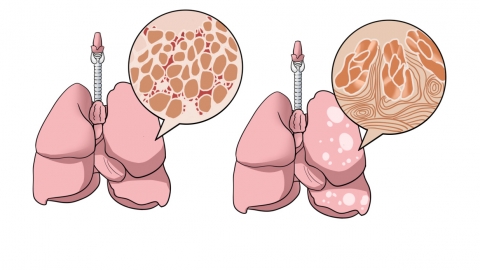What medications are used to treat pulmonary tuberculosis?
Generally, pulmonary tuberculosis is a chronic respiratory infectious disease caused by infection with Mycobacterium tuberculosis. Common symptoms include cough, sputum production, hemoptysis, low-grade fever, and night sweats. Patients may take medications such as isoniazid tablets, rifampicin capsules, pyrazinamide tablets, ethambutol hydrochloride tablets, and streptomycin injection under medical guidance. Detailed analysis is as follows:
1. Isoniazid Tablets
Isoniazid is a first-line anti-tuberculosis drug that inhibits the synthesis of the Mycobacterium tuberculosis cell wall and interferes with bacterial metabolism, thereby killing the bacteria. It is particularly effective against actively growing Mycobacterium tuberculosis and serves as the foundational medication for treating all types of pulmonary tuberculosis. It is often used in combination with other anti-tuberculosis drugs to enhance therapeutic effects.

2. Rifampicin Capsules
Rifampicin exerts bactericidal effects by inhibiting the RNA polymerase of Mycobacterium tuberculosis, thereby blocking bacterial RNA synthesis. It is effective against both actively growing and dormant Mycobacterium tuberculosis. With a broad antimicrobial spectrum, it is not only used in the treatment of pulmonary tuberculosis but also in other mycobacterial infections. It should be used in combination with other anti-tuberculosis drugs to prevent drug resistance.
3. Pyrazinamide Tablets
Pyrazinamide effectively kills Mycobacterium tuberculosis in acidic environments, especially showing significant activity against intracellular, slowly growing bacteria. It works by interfering with bacterial folate metabolism and cell wall synthesis. It is an important component of short-course anti-tuberculosis treatment regimens, helping shorten the treatment duration and improve cure rates.
4. Ethambutol Hydrochloride Tablets
Ethambutol hydrochloride inhibits the synthesis of the Mycobacterium tuberculosis cell wall, preventing bacterial growth and reproduction. It is a bacteriostatic agent commonly used in combination with bactericidal drugs to delay the development of drug resistance. It is suitable for all types of pulmonary tuberculosis. Regular vision monitoring is necessary during use to prevent optic nerve damage.
5. Streptomycin Injection
Streptomycin is an aminoglycoside antibiotic that exerts bactericidal effects by inhibiting protein synthesis in Mycobacterium tuberculosis. It is particularly effective against extracellular tuberculosis bacteria. It is primarily used in initial treatment of pulmonary tuberculosis or for patients resistant to other oral anti-tuberculosis drugs. Due to its nephrotoxicity and ototoxicity, renal function and hearing must be closely monitored under medical supervision during use.
Maintain healthy lifestyle habits in daily life, avoid fatigue, ensure adequate rest, follow a light and nutritious diet, and consume more protein- and vitamin-rich foods such as eggs, milk, fresh fruits, and vegetables.





